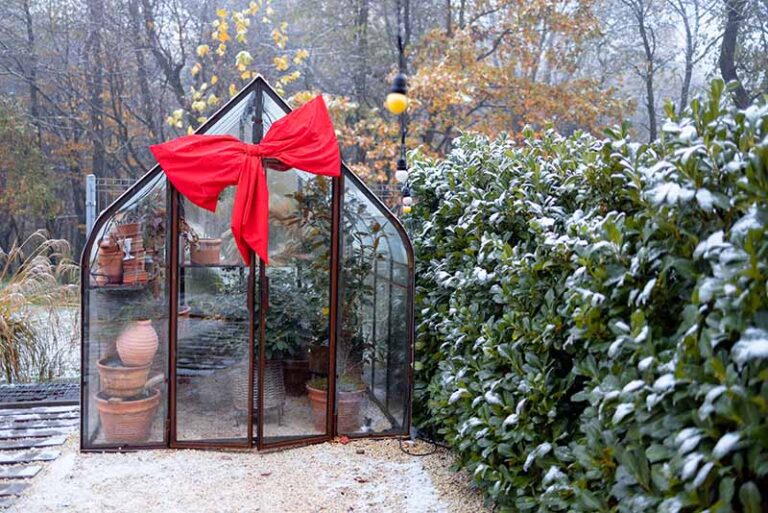A beautiful garden doesn’t have to be high-maintenance. For busy homeowners or those looking to enjoy a lush garden without investing hours of upkeep, creating a low-maintenance garden is the perfect solution. In this comprehensive guide, we’ll delve deeper into each tip and trick to help you design a garden that flourishes with minimal effort. From plant selection to smart landscaping choices, you’ll discover how to achieve a stunning garden that won’t eat up your free time.
1. Choose Low-Maintenance Plants:
- Examples: Hardy perennials like daylilies, hostas, sedum, and coneflowers.
- Timeframe: Plant in the spring or early fall for best results.
When selecting low-maintenance plants, consider those native to your region. Native plants are adapted to the local climate and often require less care. Hardy perennials, such as daylilies, hostas, sedum, and coneflowers, can thrive with minimal intervention.
2. Incorporate Native Plants:
- Examples: Local wildflowers, native shrubs like dogwood or serviceberry.
- Timeframe: Spring or early fall planting.
Native plants not only require less maintenance but also support local wildlife. Choose from a variety of native wildflowers or shrubs like dogwood and serviceberry, which are adapted to your region’s conditions.
3. Install Automatic Irrigation:
- Examples: Drip irrigation systems, soaker hoses, or smart sprinkler systems.
- Timeframe: Install before the growing season begins.
Investing in automatic irrigation systems ensures consistent and efficient watering. Drip irrigation, soaker hoses, or smart sprinkler systems can be programmed to water your garden according to specific needs, reducing water waste and the time spent watering manually.
4. Mulch Your Garden Beds:
- Examples: Organic mulch such as wood chips, straw, or compost.
- Timeframe: Apply mulch in late spring or early summer to retain moisture and deter weeds.
Mulching your garden beds helps retain moisture, suppress weeds, and maintain soil temperature. Organic mulch options, such as wood chips, straw, or compost, enrich the soil as they break down over time.
5. Group Plants by Watering Needs:
- Examples: Group thirsty plants together to streamline watering.
- Timeframe: Plan your garden layout before planting to ensure efficient grouping.
Efficient garden layout planning involves grouping plants with similar water requirements together. This minimizes water waste and ensures that each plant receives the appropriate moisture levels.
6. Limit Lawn Areas:
- Examples: Replace some lawn with hardscaping like patios, paths, or decks.
- Timeframe: Consider gradual lawn reduction over a season or two for a balanced transformation.
Reducing the size of your lawn minimizes mowing and watering needs. Replace portions of your lawn with hardscaping features like patios, paths, or decks to create functional outdoor spaces that require little to no maintenance.
7. Opt for Permeable Hardscaping:
- Examples: Use permeable pavers, gravel paths, or crushed stone for easy water absorption.
- Timeframe: Incorporate during garden design or renovations for better drainage.
Permeable hardscaping materials allow rainwater to soak into the ground, reducing runoff and promoting healthy soil. Consider using permeable pavers, gravel paths, or crushed stone in your garden design to enhance drainage.
8. Prune and Deadhead Regularly:
- Examples: Remove spent flowers, dead branches, and overgrowth promptly.
- Timeframe: Regular maintenance during the growing season ensures a tidy garden.
Regular pruning and deadheading prevent your garden from becoming overgrown and messy. Remove spent flowers, dead branches, and any excess growth to maintain a tidy appearance throughout the growing season.
9. Choose Low-Maintenance Trees:
- Examples: Slow-growing, disease-resistant tree varieties like maple, oak, or ginkgo.
- Timeframe: Plant trees in the early spring or late fall for optimal establishment.
Select tree varieties known for their low maintenance requirements. Slow-growing trees, such as maple, oak, or ginkgo, are less likely to require frequent pruning or special care.
10. Embrace Ground Covers: – Examples: Creeping thyme, ground-hugging juniper, or clover. – Timeframe: Plant in early spring or early fall to prevent weeds and erosion.
Ground covers are excellent for reducing weed growth and erosion while adding visual interest to your garden. Consider planting ground covers like creeping thyme, ground-hugging juniper, or clover in early spring or early fall for optimal coverage.
11. Install a Low-Maintenance Lawn: – Examples: Choose grass types that require less mowing and watering, like buffalo grass or fine fescue. – Timeframe: Re-sod or reseed your lawn in early fall to ensure healthy growth.
Opt for grass varieties that demand less attention, such as buffalo grass or fine fescue. Re-sod or reseed your lawn in early fall to promote healthy growth with minimal maintenance.
12. Implement Smart Weeding Strategies: – Examples: Use weed barriers, organic herbicides, or regular manual weeding. – Timeframe: Ongoing throughout the growing season to keep weeds at bay.
Weed management is crucial for a low-maintenance garden. Employ smart weeding strategies, including the use of weed barriers, organic herbicides, or regular manual weeding, throughout the growing season to prevent weed overgrowth.
13. Minimize Fertilizer Usage: – Examples: Use slow-release fertilizers sparingly, opting for natural soil enrichment techniques. – Timeframe: Apply fertilizers in early spring or as needed based on soil tests.
Reducing fertilizer usage promotes low-maintenance gardening. Apply slow-release fertilizers sparingly, and consider natural soil enrichment techniques like composting to maintain soil health.
14. Consider Drought-Tolerant Plants: – Examples: Succulents, ornamental grasses, lavender, and Russian sage. – Timeframe: Integrate drought-tolerant plants into your garden plan for water conservation.
Drought-tolerant plants require less watering and are well-suited for low-maintenance gardens. Incorporate varieties like succulents, ornamental grasses, lavender, and Russian sage into your garden plan to conserve water.
15. Invest in Quality Tools: – Examples: High-quality pruners, weeding tools, garden gloves, and a sturdy wheelbarrow. – Timeframe: Purchase tools as needed, maintaining them properly for long-lasting use.
Invest in high-quality gardening tools that make your maintenance tasks more efficient. Acquire essential items such as pruners, weeding tools, garden gloves, and a sturdy wheelbarrow as needed and ensure their proper maintenance for long-lasting use.
Conclusion: Creating a low-maintenance garden is a rewarding endeavor for busy homeowners. Each tip and trick highlighted in this guide empowers you to design a garden that thrives with minimal effort. By carefully selecting low-maintenance plants, implementing efficient irrigation, and smartly planning your garden layout, you can enjoy a vibrant and beautiful garden without sacrificing your free time. With these strategies, you’ll discover that achieving a stunning low-maintenance garden is well within your reach.



